Search Results for: Dolphins
Skip to resultsCan’t find what you’re looking for? Visit our FAQ page.
454 results for: Dolphins
-
 Animals
AnimalsIn marine mammals’ battle of the sexes, vaginal folds can make the difference
Patricia Brennan and colleagues found certain female ocean mammals have vaginal folds that give them an advantage in mating
-
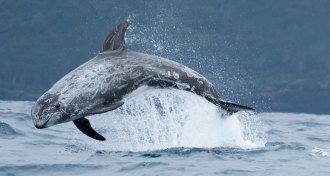 Artificial Intelligence
Artificial IntelligenceAI eavesdrops on dolphins and discovers six unknown click types
An algorithm uncovered the new types of echolocation sounds among millions of underwater recordings from the Gulf of Mexico.
-
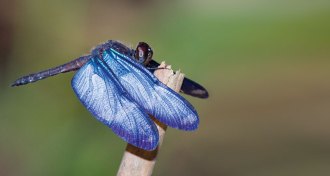 Science & Society
Science & SocietyThese are the most-read Science News stories of 2017
From Cassini and eclipses to ladybugs and dolphins, Science News online readers had a wide variety of favorite stories on our website.
-
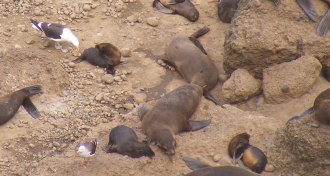 Animals
AnimalsOne creature’s meal is another’s pain in the butt
Kelp and dolphin gulls in Patagonia have found a new food source. But they accidentally injure fur seal pups to get it.
-
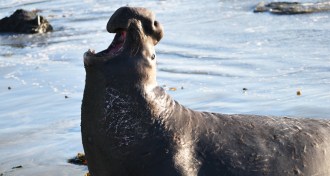 Animals
AnimalsElephant seals recognize rivals by the tempo of their calls
The distinct sputtering-lawnmower sound of a male elephant seal’s call has a tempo that broadcasts his identity to competitors.
-
 Particle Physics
Particle PhysicsReaders puzzled by proton’s properties
Readers sent feedback on under-ice greenhouses in the Arctic, the Martian atmosphere and more.
-
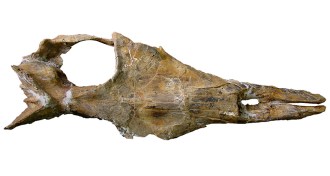 Paleontology
PaleontologyAncient whale tells tale of when baleen whales had teeth
A 36 million-year-old whale fossil bridges the gap between ancient toothy predators and modern filter-feeding baleen whales.
-
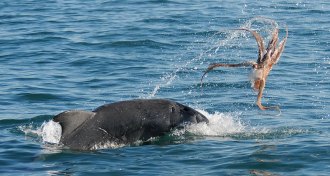 Animals
AnimalsHow a dolphin eats an octopus without dying
An octopus’s tentacles can kill a dolphin — or a human — when eaten alive. But wily dolphins in Australia have figured out how to do this safely.
-
 Animals
AnimalsTool use in sea otters doesn’t run in the family
A genetic study suggests that tool-use behavior isn’t hereditary in sea otters, and that only some animals need to use tools due to the type of food available in their ecosystem.
-
 Life
LifeCity dolphins get a boost from better protection and cleaner waters
Bottlenose dolphins near Adelaide, Australia, are slowly growing in number due to better environmental conditions and better protection.
-
 Paleontology
PaleontologyAncient armored fish revises early history of jaws
The fossil of a 423-million-year-old armored fish from China suggests that the jaws of all modern land vertebrates and bony fish originated in a bizarre group of animals called placoderms.
By Meghan Rosen -
 Paleontology
PaleontologyNew fossil suggests echolocation evolved early in whales
A 27-million-year-old whale fossil sheds light on echolocation’s beginnings.